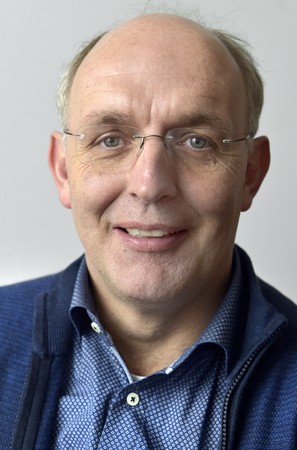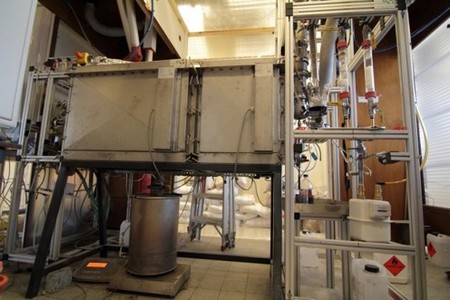New project aims to produce green kerosene
An international consortium led by University of Groningen chemical engineer Erik Heeres has received EUR 4 million in funding from the European Union’s Horizon2020 research programme to develop a new, more efficient method for the production of liquid fuels from biomass. They will dissolve biomass in liquid salts to increase the efficiency of pyrolysis. Within four years, the new process should be working in the lab.
It takes thousands if not millions of years for organic material to turn into oil through natural processes. However, it is possible to break down this material into pyrolytic oil in a matter of minutes using pyrolysis, a high temperature treatment. The first commercial pyrolysis oil plant recently opened in Enschede, turning five tons of biomass into three tons of oil per hour. Further refinement of the process could produce liquid fuels such as petrol or diesel from this oil.

Liquid salts
‘But there are still drawbacks to converting organic matter into liquid fuels’, says Erik Heeres, Professor in Green Chemical Reaction Engineering at the University of Groningen. Efficiency could be improved; for example, part of the carbon in the biomass currently ends up as unusable tar and gas-phase components. ‘And, furthermore, the process isn’t very suited to converting lignin, the second most abundant biomass polymer, as this will melt when it enters the pyrolytic reaction chamber and clog the transport system that feeds the reactor.’
In collaboration with nine partners from academia, industry and research organizations, Heeres came up with a possible means to improve the entire conversion process: ‘The first step will be to dissolve the organic matter in liquid salts. This will make it easier to pump it into a reaction chamber.’ Furthermore, liquid can be heated more easily and rapidly than solids, so this will help the pyrolytic process: ‘We expect this to increase the carbon yield. And the salts might have catalytic properties, which may also increase the efficiency and improve the product properties, possibly at a reduced temperature.’

During pyrolysis, the oil is produced as a vapour and then condensed into a liquid for the next step in the process – a hydrogen treatment which reduces the oxygen content and breaks down the hydrocarbons into shorter chains: ‘In our proposal, we add the hydrogen during the pyrolysis, so the treatment is done in the gas phase. Again, we expect this to be more efficient.’ The hydrogen treatment takes place under high pressure, which is not a problem when the reactor is fed with liquefied organic matter: ‘But it would be very difficult if you fed it solids.’
Kerosene
If all these improvements work as expected, the process will be very efficient and yield high-quality hy drocarbons of some ten to sixteen carbons: ‘These could be further refined in standard equipment to produce petrol, diesel or even kerosene.’ The latter is a challenge, explains Heeres: ‘The aviation industry has very strict guidelines on the quality of kerosene, for obvious reasons. Using conventional pyrolysis technology it is difficult to meet these requirements. But we are quietly confident that we could turn biomass into kerosene with our method.’

The liquid salt technology and all the other refinements should improve both the yield and the quality of the pyrolytic oil: ‘Ideally, we want every carbon atom in our starting material to be converted into liquid fuel,’ says Heeres. In four years, a lab bench production system should provide proof of principle: ‘We don’t know if this is feasible, but we do have high hopes that this will eventually become a commercially viable system.’
Food crops
To get there, Heeres has appointed a PhD student and a postdoc, both of whom will start their work in September. In all, the University of Groningen will receive a quarter of the EUR 4 million budget provided by the EU Horizon2020 research programme. The consortium provides specialists for all phases of the process, from liquid salt handling and selection to upscaling of the technology beyond the lab, to the societal questions the technology might raise: ‘There is the issue of using food crops or arable land for the production of biofuels. As we use low-quality biomass like lignin, a by-product of the pulp and paper industry which is now mostly burned, our technology would avoid this controversy.’ And it could be a breakthrough for making aviation more sustainable: ‘So far, there are no real alternatives to fossil fuel. Our technology could change that.’
| Last modified: | 03 December 2019 3.06 p.m. |
More news
-
10 June 2024
Swarming around a skyscraper
Every two weeks, UG Makers puts the spotlight on a researcher who has created something tangible, ranging from homemade measuring equipment for academic research to small or larger products that can change our daily lives. That is how UG...
-
21 May 2024
Results of 2024 University elections
The votes have been counted and the results of the University elections are in!

